Your living room’s heart is almost always the sofa — the place where people gather, talk, unwind, and create memories. But even the most luxurious sofa can look flat or unfinished if not styled thoughtfully. That’s where the magic of learning how to style a sofa with pillows comes in.
Pillows aren’t just comfort items — they’re the easiest, most affordable tools for giving any space a designer makeover. With the right combination of color, texture, and placement, your sofa can instantly look more polished and inviting. You don’t need to be a stylist or decorator; you only need a few smart choices and some creativity.
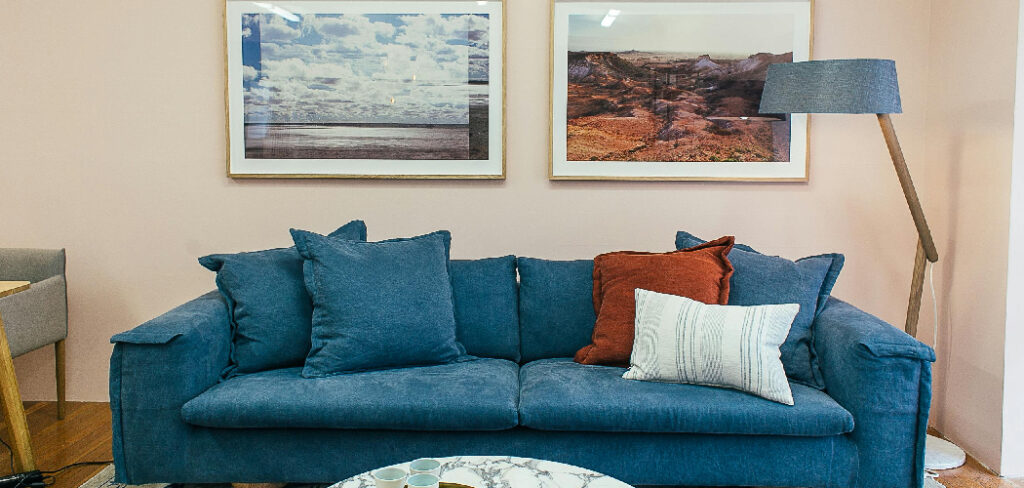
In this guide, you’ll discover why pillow styling makes such a difference, what tools you’ll need, and a step-by-step process to get a stunning, cohesive look. From textures and layering to symmetry and seasonal customization, you’ll learn how to transform your sofa into a cozy, beautiful centerpiece for your home.
The Benefits of Styling Your Sofa with Pillows
Adding pillows is like adding personality to your furniture. They do far more than decorate — they create comfort, contrast, and a sense of completion.
Here’s what you gain when you style your sofa well:
- Instant Transformation: Even a simple or aging sofa looks brand-new with fresh pillows. They act like a facelift for your furniture.
- Enhanced Comfort: Pillows make your sofa cozier, supporting your back, arms, or head while lounging.
- Seasonal Flexibility: You can change covers by season — bright cottons for spring, cozy velvets for winter — keeping the look fresh year-round.
- Creative Expression: Pillows let you express your taste through pattern, print, and texture combinations.
- Affordable Redecorating: You can refresh your entire living space without investing in new furniture.
- Balance and Warmth: Pillows visually fill negative space, making a room feel balanced, warm, and intentionally styled.
In short, the right pillows turn a plain sofa into a welcoming masterpiece that ties the whole room together.
Tools and Materials You’ll Need
Before jumping into styling, make sure you have the right essentials. These tools and materials will help you create a cohesive look with minimal effort:
- Clean Sofa Base: Dust-free, wrinkle-free, and ready to be styled.
- Pillow Inserts: A combination of soft and firm fills — down, synthetic, or foam.
- Pillow Covers: A mix of textures — cotton, velvet, linen, faux fur, or silk.
- Color Swatches or Fabric Samples: To match your existing décor palette.
- Measuring Tape: Keeps proportions consistent and spacing even.
- Accent Throw Blanket: Adds dimension and softness behind or beside pillows.
- Mood Board or Reference Photos: Helps visualize your final look before you begin.
Having these items at hand will make your styling process smoother, faster, and more fun
9 Step-by-Step Guide: How to Style a Sofa with Pillows
Styling is both an art and a science — balancing symmetry, scale, and texture to create visual flow. Follow these detailed steps to master it.
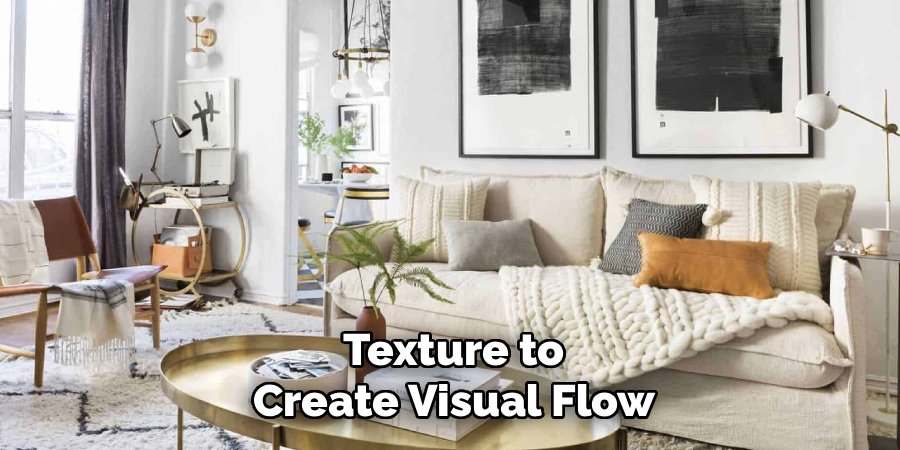
Step 1: Start with a Clean Base
Your design begins with preparation. Vacuum or lint-roll your sofa to remove dust and pet hair. Straighten the cushions and smooth any wrinkles.
A clean surface allows your new colors and patterns to shine. It also helps pillow fabrics sit properly without sliding or bunching. Imagine preparing a blank canvas — every good artist starts with one.
If you’re refreshing an old sofa, consider adding a neutral slipcover first. It provides a clean slate that highlights your chosen pillows beautifully.
Step 2: Choose a Cohesive Color Palette
Color creates mood, so select tones that reflect your personality and the room’s energy. A good rule is to stick to three colors:
- A dominant base color that blends with your sofa.
- A secondary tone that complements it.
- One accent color that adds pop and excitement.
For example, a beige sofa can look stunning with cream and rust-orange pillows plus a touch of navy or gold. For darker sofas, try light neutrals with one jewel tone.
Pull inspiration from existing décor — artwork, rugs, or curtains — to keep everything harmonized. Cohesion ensures your styling feels professional and intentional, not random.
Step 3: Play with Sizes and Shapes
Variety creates depth. Mix large, medium, and small pillows to achieve a layered look. Start with 22- to 24-inch pillows at the ends, move inward with 18- to 20-inch ones, and finish with smaller lumbar or round pillows in the center.
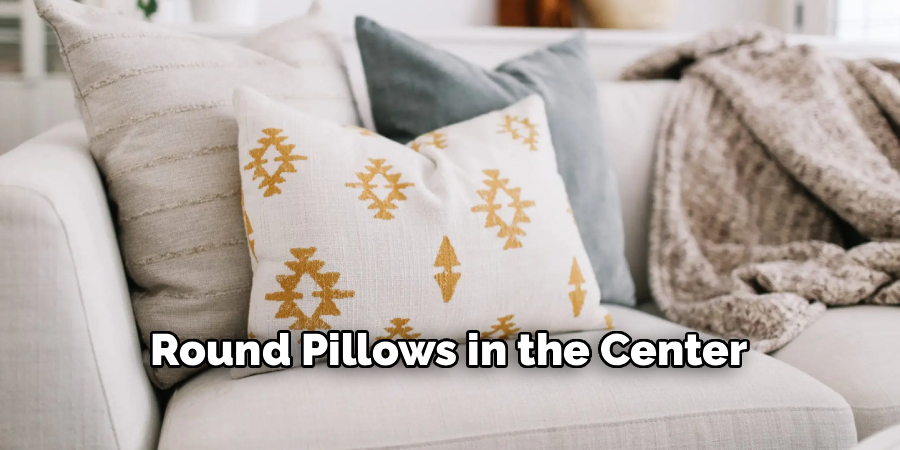
Each size serves a purpose: large pillows anchor, medium ones fill gaps, and small ones draw attention. Too many of one size can make the arrangement feel stiff or monotonous.
Don’t forget about shape — square pillows provide balance, rectangular ones elongate, and circular ones soften. Mixing a few of each adds playful rhythm without overwhelming the sofa.
Step 4: Layer Textures for Visual and Tactile Appeal
Texture breathes life into your setup. Mix smooth materials like linen with plush options such as velvet or faux fur. Contrast glossy finishes with matte weaves.
The tactile experience is just as important as the visual one. When someone sits, they should feel comfort, not uniform flatness. During warmer months, use breathable fabrics like cotton or linen. In cooler weather, bring in knitted or wool textures for warmth.
Texture layering prevents your arrangement from appearing flat — it gives the entire setup a cozy, multidimensional look.
Step 5: Mix Patterns Smartly
Patterns can energize or overwhelm, depending on how they’re balanced. Combine patterns of different scales — one bold print, one medium pattern, and one subtle design.
Pair a large floral with a fine stripe or a geometric print with a small polka dot. Always anchor prints with at least one solid-colored pillow to rest the eye.
Choose a common thread such as color family or theme (for instance, coastal blues or earthy neutrals). When patterns share something in common, they’ll look collected rather than chaotic.
Step 6: Arrange Pillows Symmetrically
Symmetry offers classic beauty and visual calm. It works well in traditional, contemporary, and minimalist spaces.
Place identical pillows on both sides of the sofa, working from large to small toward the center. The mirrored layout gives instant order and formality. Fluff each pillow to ensure they maintain structure and height.
Symmetry is especially effective if your sofa faces a focal point such as a fireplace or TV, because it naturally draws the viewer’s eyes inward.
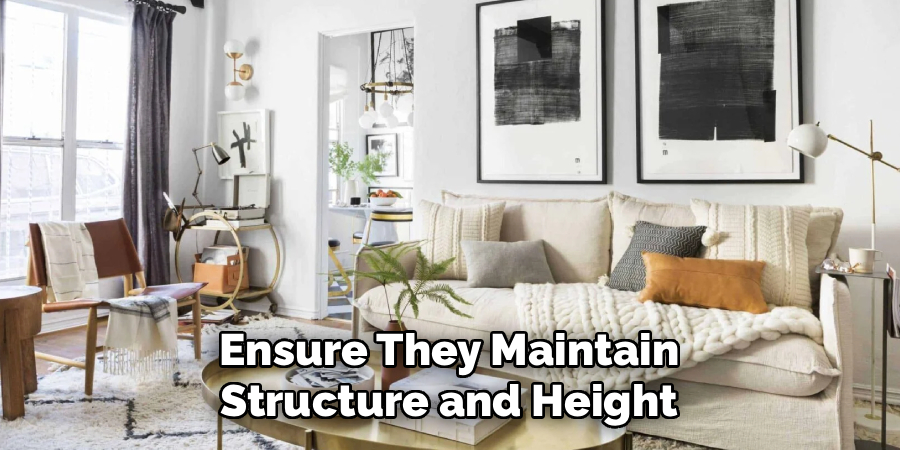
Step 7: Try Asymmetry for a Relaxed Feel
If you prefer a casual or bohemian aesthetic, asymmetry is your friend. Arrange more pillows on one side of the sofa and fewer on the other. Balance this by draping a throw blanket on the lighter side.
Asymmetry creates visual movement — it feels effortless, lived-in, and spontaneous. This approach suits modern lofts, creative spaces, or any home that values warmth over perfection.
Think of it as jazz: intentional but free-flowing, creating personality and charm without strict rules.
Step 8: Add an Accent Pillow for Personality
Every sofa deserves a centerpiece pillow — something that stands out. Choose an accent pillow that features unique texture, pattern, or craftsmanship.
It could be a metallic embroidered design, a handcrafted tribal print, or a limited-edition cover from your travels. Accent pillows tell stories and give your sofa individuality.
This one pillow should break the rules slightly — maybe brighter, bolder, or textured differently. It’s your design’s conversation starter and signature element.
Step 9 (Optional): Incorporate a Throw Blanket
A throw isn’t just about warmth; it’s a styling essential. Fold it neatly across the arm or drape it loosely over the back. Choose a color that complements your pillows without competing.
Throws introduce another layer of texture and soften harsh lines. They also make your arrangement look intentional, not accidental. For photo-ready styling, let part of the throw touch the floor slightly — it adds effortless luxury.
Optional, yes — but often the finishing touch that makes your styling feel complete.
Customization Tips
Once you’ve mastered the basics, add personal flair:
- Rotate by Season: Swap covers quarterly for a fresh vibe.
- Monogram or Embroider: Add initials or symbols for character.
- Use Odd Numbers: Arrangements of three or five look naturally balanced.
- Experiment with Fills: Down for plush softness, foam for structure, or blends for balance.
- Layer with Throws: Coordinate throw colors to highlight or tone down bold pillows.
Customization is about making your sofa reflect who you are — elegant, cozy, vibrant, or minimalist.
Common Mistakes to Avoid
Even the most stylish setups can falter because of avoidable errors. Keep these in mind:
- Overcrowding: Too many pillows make the sofa unusable and messy.
- Wrong Scale: Oversized pillows overpower; undersized ones get lost.
- Ignoring Color Harmony: Every hue should complement the overall palette.
- Neglecting Maintenance: Flat, wrinkled pillows ruin visual appeal — fluff regularly.
- Prioritizing Looks Over Comfort: The best setups balance beauty and usability.
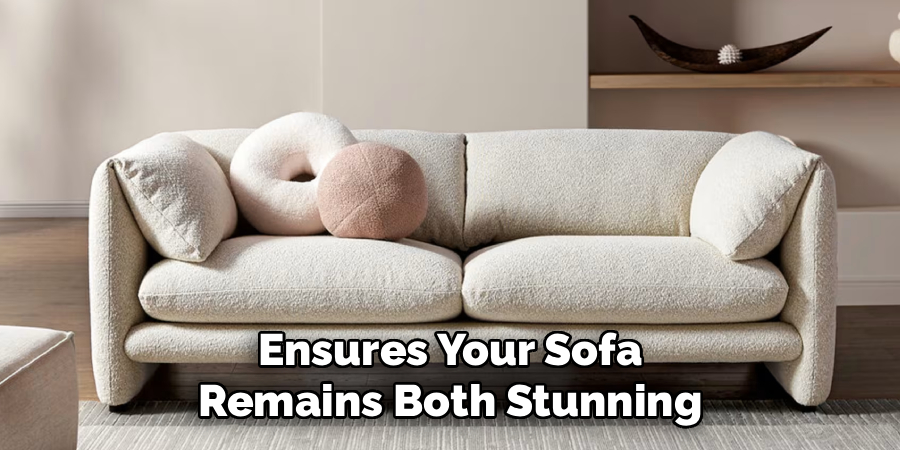
Avoiding these mistakes ensures your sofa remains both stunning and functional every day.
Frequently Asked Questions
1. How many pillows should I use on a standard sofa?
For a three-seat sofa, four to six pillows usually achieve perfect balance. If your sofa is larger or sectional, you can add more. Keep in mind that negative space helps your design breathe; don’t cover every inch.
2. What’s the best type of pillow insert for long-lasting shape?
Down or down-alternative inserts provide softness and flexibility. They let you create that stylish “chop” in the center while maintaining plumpness. Foam inserts offer firmness and better back support. Always size inserts two inches larger than covers for fullness.
3. How do I coordinate pillows with the rest of my living room?
Pick at least one color or texture that already exists in your room — rug, art, or drapes. Then add a contrasting tone to keep things interesting. The idea is unity with a twist: connected, but never boring.
4. How often should I replace or wash pillow covers?
Wash removable covers every two to three months, or more often in high-traffic homes. Rotate inserts seasonally to maintain freshness. If your fabric is delicate (like silk or velvet), dry-clean instead of machine-wash. Proper care keeps pillows vibrant and hygienic.
5. Can I mix fabrics like velvet and linen?
Definitely. Mixing fabrics adds luxury and variety. For example, pair soft velvet with breezy linen or nubby cotton. The contrast in textures adds richness. Just stay within your color palette so the mix feels intentional, not random.
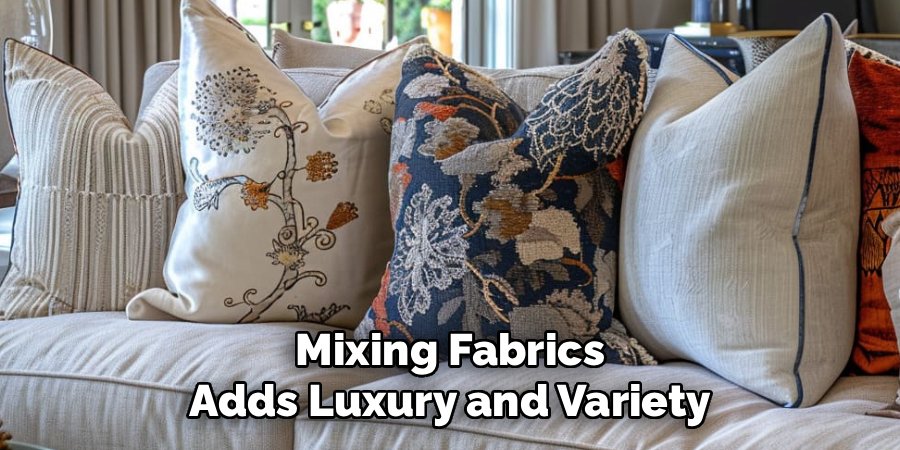
Conclusion
Mastering how to style a sofa with pillows is one of the simplest ways to elevate your living room’s design and comfort. With careful attention to color, texture, and proportion, you can turn any plain couch into a cozy, magazine-worthy statement piece.
To recap:
- Keep your base clean and neutral before styling.
- Work with three main colors and mix textures smartly.
- Combine symmetry for balance and asymmetry for character.
- Don’t forget a standout accent pillow and a complementary throw.
Every pillow placement tells a story — of comfort, creativity, and personality. Your craftsmanship will shine every time guests admire your thoughtfully styled sofa. The best part? You can refresh it anytime, simply by changing a few covers and embracing your evolving sense of style.

About
Emmett Finn is a distinguished figure in the world of Diy design, with a decade of expertise creating innovative and sustainable Diy solutions. His professional focus lies in merging traditional craftsmanship with modern manufacturing techniques, fostering designs that are both practical and environmentally conscious. As the author of diy, Emmett Finn delves into the art and science of furniture-making, inspiring artisans and industry professionals alike.
Education RMIT University
(Melbourne, Australia) Associate Degree in Design (Emmett Finn) Focus on sustainable design, industry-driven projects, and practical craftsmanship. Gained hands-on experience with traditional and digital manufacturing tools, such as CAD and CNC software.
Nottingham Trent University
(United Kingdom) Bachelor’s in diyfastly.com and Product Design (Honors) Specialized in product design with a focus on blending creativity with production techniques. Participated in industry projects, working with companies like John Lewis and Vitsoe to gain real-world insights.
Publications and Impact
In diy, Emmett Finn his insights on indoor design processes, materials, and strategies for efficient production. His writing bridges the gap between artisan knowledge and modern industry needs, making it a must-read for both budding designers and seasoned professionals.

Very nice.
Thanks
Thank you very much for providing such important information.